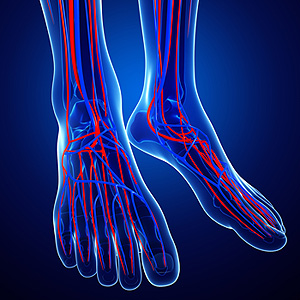The Heart and Sole Connection: Exploring the Link Between Feet and Heart
- AyresHealth
- Sep 20, 2023
- 3 min read
Believe it or not there is a close connection between our feet and heart. September is vascular disease awareness month, so we decided to talk about it!
When we think about our bodies, it's easy to compartmentalize different parts, attributing specific functions to each. The heart is hailed as the ultimate life-sustaining organ, whilst our feet can get overlooked. However, the connection between the heart and feet is intricate and fascinating. In this blog, we'll delve into the link between these two essential body parts.
The Foot's Marvellous Network
Our feet are a marvel of engineering. 26 bones, 33 joints, and more than 100 muscles, and connective tissues, all work in harmony to provide balance, mobility, and stability. The intricate network of blood vessels in our feet ensures a constant supply of oxygenated blood, which is vital for their proper functioning.
Circulatory Symphony
The heart is the central player in our circulatory system, pumping blood through a vast network of arteries and veins. This circulatory system extends all the way down to our feet. The blood that flows through our heart also nourishes our feet, delivering the oxygen and nutrients necessary for their health.
Our feet provide important indicators for general wellbeing, and foot health can directly relate to heart health. If blood flow is reduced, simple issues such as ingrown nails, cuts or bunions can result in serious complications.
Understanding Peripheral Arterial Disease (PAD)
One condition that highlights the connection between the heart and feet is Peripheral Arterial Disease (PAD). PAD occurs when the arteries in the legs and feet become narrowed or blocked due to the build up of fatty deposits. Reduced blood flow can lead to symptoms such as pain, numbness, and even tissue damage in the feet.
But what's the link to the heart?
PAD is often considered a red flag for heart health. The same processes that cause blockages in the arteries of the legs, occur in the coronary arteries, which supply blood to the heart muscle. Therefore, a diagnosis of PAD suggests similar issues are happening in the coronary arteries, increasing the risk of heart disease and heart attacks.
The Heart-Feet Connection in Diabetes
Diabetes is another area where the relationship between the heart and feet becomes evident. Diabetes can lead to poor circulation and nerve damage in the feet, increasing the risk of foot ulcers and infections. At the same time, diabetes is a significant risk factor for heart disease. The combination of foot problems and heart issues in diabetes underscores the interplay between these two crucial body parts.
Taking Care of Your Heart and Feet
Understanding the connection between the heart and feet can inspire us to take better care of both. Here are some tips to ensure the well-being of these essential body parts:
Exercise Regularly: Cardiovascular exercise promotes healthy circulation. Aim for 150 minutes of moderate exercise (getting out of breath) per week. A foot pedal exerciser is great if you're less mobile.
Eat a Balanced Diet: Try a heart-healthy diet such as the Mediterranean diet.
Manage Diabetes: If you have diabetes, control blood sugar levels to reduce the risk of foot problems and heart complications.
Stay Hydrated: Proper hydration is crucial for maintaining blood volume and circulation throughout the body.
Reduce stress and improve sleep quality: Stress and sleep problems can hugely impact our health. Don't underestimate the importance of mental wellbeing.
If you smoke - quitting can half you risk of a heart attack
Regular Check-ups: Visit your healthcare provider for regular check-ups to monitor both your heart and foot health.
When you visit a podiatrist for the first time, they will usually check the pulses in your feet as part of a vascular assessment. If foot pulses are week or can’t be felt, you may be referred for further investigation. Detecting PAD early can save lives.
.png)














Comments